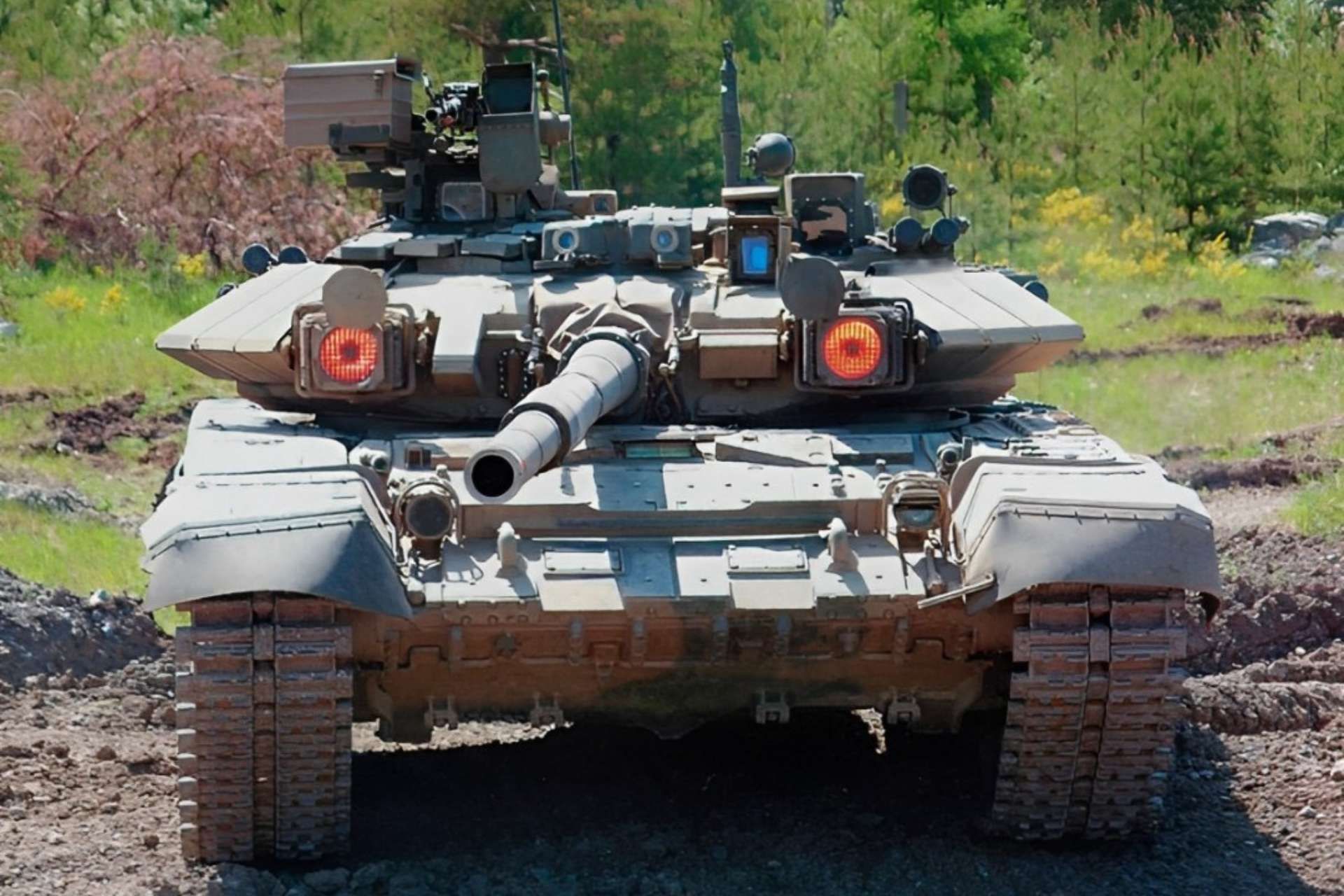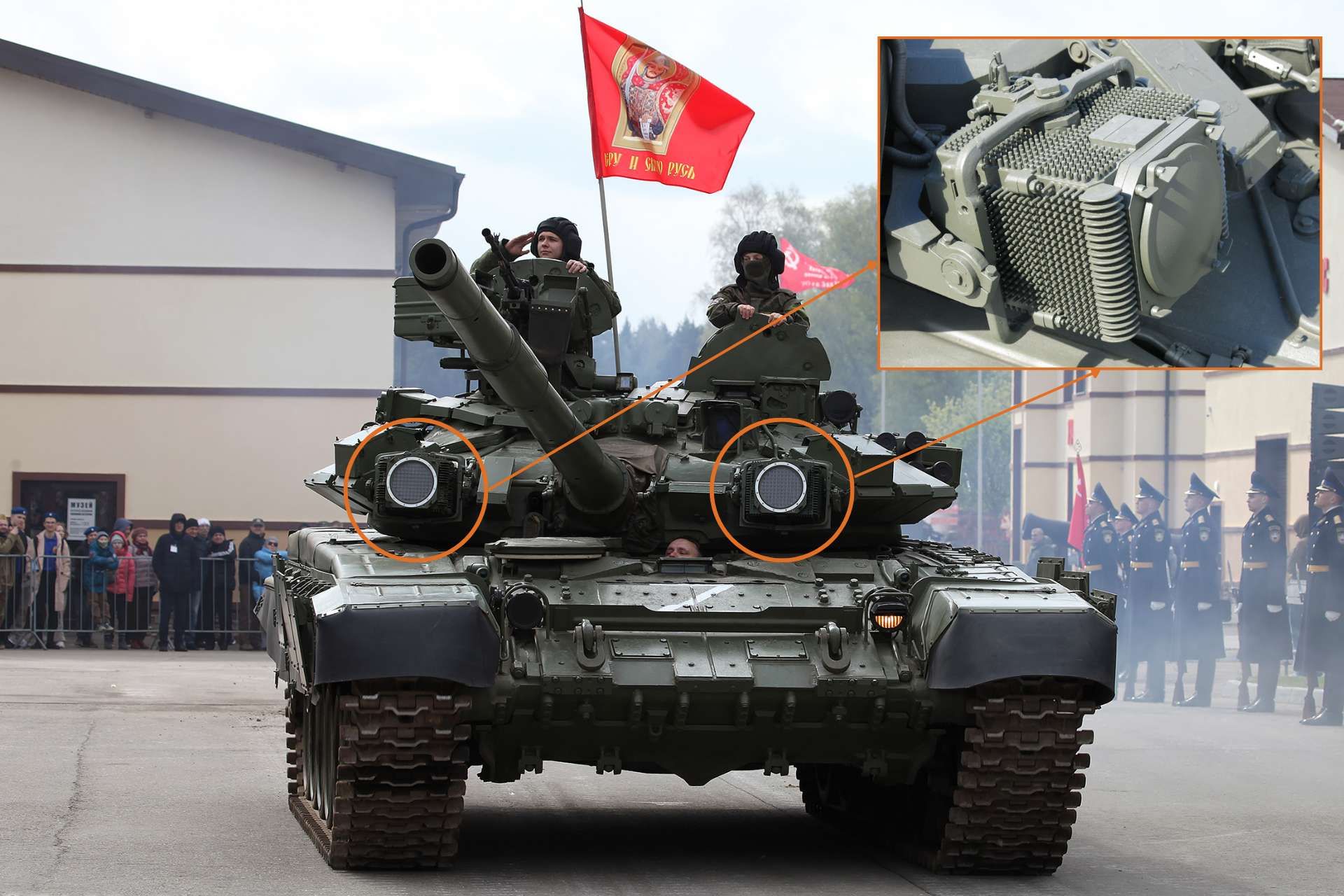Breaking News
Focus: Shtora APS, an Outdated Russian Response to Guided Missile Threats.
Anti-tank guided missiles (ATGM) have long been a constant threat to armored vehicles, and the Shtora-1 active protection system emerged as an interesting defensive solution. Developed by Russia and integrated into tanks such as the T-90 and T-80, as well as the Ukrainian T-84, this system aims to jam the guidance systems of SACLOS (Semi-Automatic Command to Line of Sight) missiles, effectively countering laser designators and range finders of incoming ATGMs. First revealed in 1980 and actively deployed since 1988, Shtora-1 is a prime example of a "soft kill" countermeasure, designed to protect tanks without physically destroying the incoming attack. While this system marked a milestone in combat vehicle protection development, it could integrate more comprehensive multispectral systems to counter today's sophisticated ATGMs and drones.
Follow Army Recognition on Google News at this link

The T-90S Main Battle Tank equipped with Shtora APS (Picture source: Rosoboronexport)
The Shtora system is characterized by the use of two infrared dazzlers that interfere with the guidance systems of wire or radio-guided anti-tank missiles, such as the American BGM-71 TOW. Shtora-1 primarily consists of four key elements: two electro-optical/infrared dazzlers mounted on either side of the turret, an infrared jammer, a modulator, and a control panel located in the combat compartment. These components work together to detect and respond to missile threats.
When a threat is detected, the system can automatically orient the main gun of the tank towards the threat, while deploying an infrared-opaque smoke screen, complicating the task for enemy guidance systems.
The infrared dazzlers of the Shtora-1 emit a coded jamming signal that disrupts the SACLOS missile sensors. These missiles, which rely on semi-automatic sighting to keep the missile aligned with the target, are misled by the interfering signals, deviating from their initial trajectory.
This technology has shown notable effectiveness against older missiles such as the TOW, HOT, AT-4, AT-5, and Sagger (Malyutka), as well as against some laser-guided munitions like the Hellfire and Kornet, but it shows limitations against newer technologies, such as the Javelin missile, which uses infrared imaging guidance.
The system also utilizes a laser warning device operating in the 0.65 to 1.6 microns range, equipped with coarse and fine resolution sensors, mounted externally on the turret. These sensors allow the system to detect the direction of laser illuminations and automatically orient the turret and cannon toward the threat. In addition to deploying an instant thermal smoke screen, the Shtora-1 can activate other active protection systems to optimize the survival of the tank in combat.

The T-90 Main Battle Tank equipped with Shtora APS during Victory Day Parade 2024 (Picture source: Vitaly Kuzmin/Wikimedia)
Compared to other APS systems such as the American Trophy or the Chinese GL5, Shtora stands out for its jamming approach rather than directly destroying incoming threats. While systems like Trophy physically destroy approaching projectiles using a suite of radars and countermeasure launchers, Shtora focuses on preventing a valid target acquisition from the outset, which can be less costly in terms of ammunition.
Despite its impressive capabilities, the operational history of Shtora-1 has revealed some weaknesses. The system faced significant challenges in Syria and Ukraine, where tanks equipped with Shtora-1 were lost to advanced guided weapons. These incidents led to a reevaluation of the use of Shtora-1 on modern Russian tanks, with some recent models no longer including the system.
However, the effectiveness of Shtora against modern technologies can be questioned, particularly with the rapid evolution of drones and more advanced optical guidance systems that do not rely solely on infrared signals. While effective against traditional SACLOS systems, Shtora might be less effective against these new technologies, underscoring the importance for Russia and other nations to continuously adapt their vehicular defense approaches.
Shtora-1 has marked an important step in the development of active protection systems for combat tanks. Although its effectiveness against the most modern anti-tank missile technologies is debated, its role in the history of defense systems is undeniable. More developed systems have since appeared, including the Russian Afghanit system that equips the T-14 Armata tank. The United States has developed its own system, the Iron Curtain, which uses optical and acoustic sensors to detect threats at very close range.


























